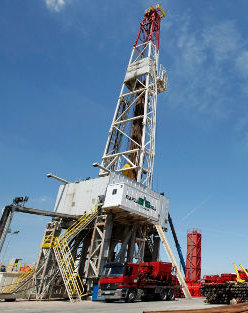Tremors triggered by fractured practice
 A US study says injecting wastewater from gas drilling operations back into the ground can create geological instability, which can be triggered by tremors in other parts of the planet.
A US study says injecting wastewater from gas drilling operations back into the ground can create geological instability, which can be triggered by tremors in other parts of the planet.
New research in the journal Science has shown one prominent example; research say a massive 9.0 magnitude earthquake in Japan in 2011 set off a swarm of earthquakes in the western Texas town of Snyder near the Cogdell oil field, culminating in a 4.5 magnitude quake about six months later. Similar events were reported near active wells in Oklahoma after an 8.8 magnitude quake in Chile in 2010.
Lead author Nicholas van der Elst of Columbia University said “We weren't really confident until we found the same pattern of little bursts of seismicity following the passage of seismic waves from several of these big earthquakes... any individual case could be a coincidence but once you start observing it systematically, then you can have more confidence that you are really looking at a physical relationship.”
Despite a history of man-made quakes near wastewater injection sites, only a small number of North America’s 30,000 disposal wells are a problem, said US Geological Survey seismologist William Ellsworth, who published an article in the journal reviewing the state of research.
Authorities at other universities have said the research requires more investigation, the scientists involved say they are now working on a way to determine the rate of quakes from pumping information.
A copy of the research undertaken by the US Geological Society is available here.








 Print
Print